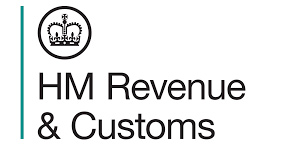HMRC SDLT: Introduction to Stamp Duty Land Tax: Overview and Historical Context
Introduction to Stamp Duty Land Tax (SDLT)
Stamp Duty Land Tax (SDLT) was introduced through the Finance Act 2003 to replace the former stamp duty system. It applies to land transactions in England and Northern Ireland, with different taxes now in place for Scotland and Wales. SDLT does not require physical stamping of documents for transactions from 1 December 2003 onwards. For more detailed information on the transition from the old system and commencement provisions, refer to the SDLTM49000 guidance.
- SDLT replaced the former stamp duty in 2003.
- Applies to land transactions in England and Northern Ireland.
- Scotland and Wales have their own land transaction taxes.
- No need for physical stamping of documents post-1 December 2003.
- Further guidance is available for transitional provisions.
“`

Read the original guidance here:
HMRC SDLT: Introduction to Stamp Duty Land Tax: Overview and Historical Context
Introduction to Stamp Duty Land Tax (SDLT)
What is SDLT?
Stamp Duty Land Tax (SDLT) was introduced by the Finance Act 2003. It is a tax that applies to certain land transactions in England and Northern Ireland. SDLT replaced the older system known as stamp duty (SD).
When does SDLT apply?
SDLT applies to any transaction involving any estate, interest, right, or power related to land. This means that if you are buying, leasing, or transferring land or property, you may need to pay SDLT.
Key Dates
- If a land transaction is based on a contract dated 10 July 2003 or earlier, then the original stamp duty rules may still apply. This means the new SDLT rules might not affect those transactions.
- Documents related to land transactions that occur on or after 1 December 2003 are charged SDLT, but they do not need to be physically stamped.
Changes in Tax for Other Areas
From April 2015, SDLT no longer applies to land transactions in Scotland. Instead, these transactions are now subject to a different tax called Land and Buildings Transaction Tax (LBTT). For more information about LBTT, you can visit the Scottish Government’s website at Scottish Government Site.
In Wales, a new tax called Land Transaction Tax (LTT) came into effect on 1 April 2018. It is managed by the Welsh Revenue Authority. More details can be found on the Welsh Government’s website at Welsh Government Site.
Essential Points to Remember
- SDLT is only applicable in England and Northern Ireland.
- The original stamp duty rules may still be relevant for contracts signed before 10 July 2003.
- Transactions occurring after 1 December 2003 do not require physical stamping of documents.
- Tax regulations in Scotland and Wales differ from those in England and Northern Ireland from April 2015 and April 2018, respectively.
Further Guidance
For additional information about when SDLT applies and how it works, you can refer to more detailed guidance available at SDLTM49000 – Guidance on Commencement and Transitional Provisions.







